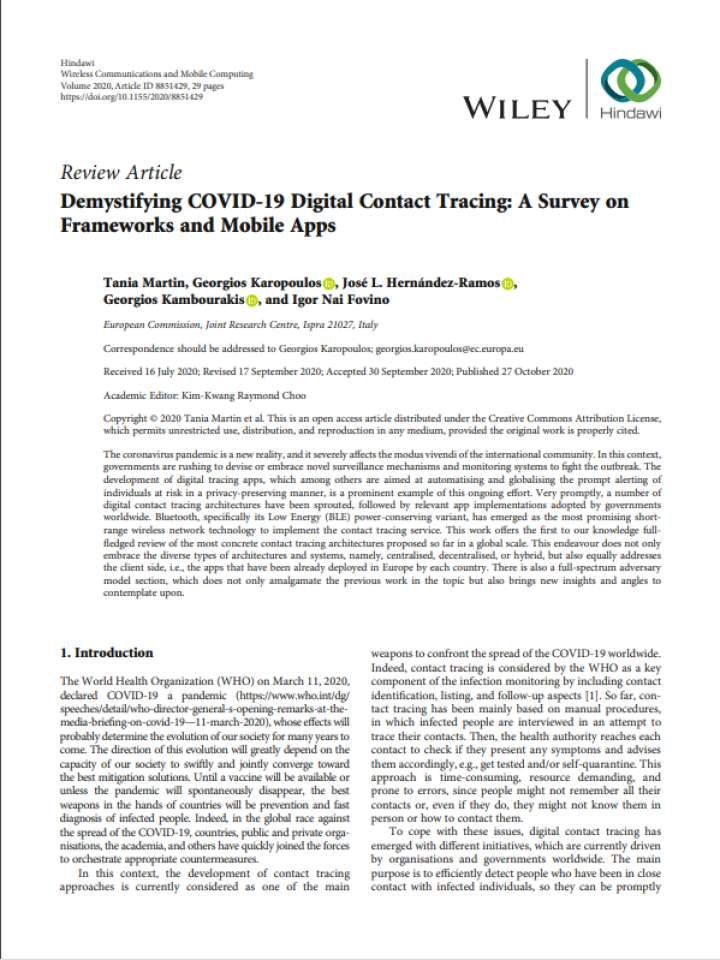This work offers the first to our knowledge fullfledged review of the most concrete digital contact tracing architectures proposed by governments so far in a global scale to fight the coronavirus pandemic.
In the context of the coronavirus pandemic, governments are rushing to devise or embrace novel surveillance mechanisms and monitoring systems to fight the outbreak. The development of digital tracing apps, which among others are aimed at automatising and globalising the prompt alerting of individuals at risk in a privacy-preserving manner, is a prominent example of this ongoing effort. Very promptly, a number of digital contact tracing architectures have been sprouted, followed by relevant app implementations adopted by governments worldwide. Bluetooth, specifically its Low Energy (BLE) power-conserving variant, has emerged as the most promising shortrange wireless network technology to implement the contact tracing service.
The current work can be used as a reference to anyone interested in better grasping the diverse facets of this rapidly evolving and timely area. It is also anticipated to stimulate and foster research efforts to the development of solutions that equally focus on the technological and data protection aspects
The contribution of the work is threefold.
- First, it offers a succinct but full-fledged review and classification of the hitherto complete frameworks proposed to realise such a service.
- Second, it details on and categorises the contact tracing apps already deployed by European countries.
- Lastly, it offers a generic adversary model, which not only conflates the relevant literature but also delivers fresh perspectives to analysing such systems both from a security and data protection viewpoints.
Explore further
